The Seed, Mural by K G Subramanyan, 4 storeys high, facade of R & D Centre, Jyoti Limited.
My small town has a natural affinity for sculptures – we have them installed on traffic circles at crossroads, scattered around in our gardens and parks, climbing up the walls of our public buildings as murals … and what do you know, we even have an officially established Sculpture Park, though very few even know of it or where it is and none of us have visited it as yet. Yeah, I forgot to mention though that somehow none of the politicians wielding the whip in my small town are much concerned about the sculptures – the ugly fiberglass rhinoceros still rules; the Sculpture Park was quietly inaugurated with no invitation to many of the senior and respected artists who have made this town their karmabhoomi.
Sculpture by Rashesh Chauhan. Display at Gallery White, Vadodara
But, happily, there are others who care. After a long while, a gallery bothered to do a fabulous show with only sculptures … and that too one on the third floor of a commercial building! Yes, that’s tough enough. Getting heavy, often unwieldy and large sculptures up the stairs, without causing any damage to the artworks is a challenge indeed. And the White Gallery’s exhibition, titled, Baroda Annuelle, Edition IV, curated by Vinit Nair, focused only on sculptors whose artworks did more than enough justice to the efforts put in by the Gallery. The exhibition, which concluded recently, demonstrated the powerful concept and content imagined by the artists, and the formidable skills that they used with the different materials that they worked with – from the good old stone, metal, clay and wood, to found scrap (metal, plastic, fiberglass, acrylic), printed and plain laminate.
Another sculpture by Rashesh Chauhan. Display at Gallery White, Vadodara.
While all the sculptors did an impressive job, it was at once amazing and surreal to see Rashesh Chauhan’s intricate recreation from iron sheets of façades of the many-storeyed but crumbling old chawl-style buildings with their precariously balanced long balconies, closely packed cluster of shops, working spaces, and decorative windows and alcoves. While at first glance, the buildings look like any ramshackle structure held together precariously by dirt and dust and miraculously still standing and occupied, that we can see in the old parts of many Indian cities, a closer look reveals Rashesh’s fine craftsmanship and a-tongue-in-cheek humour that situates a car garage on the third floor, a school in a cubby hole, a natya-gruh that could be a nasta-gruh, a photo studio in the elbow space of a ladies dressmaker, a book depot next to a marriage bureau!
Sculptures by Jithin Jayakumar. Display at Gallery White, Vadodara.
Now, how would Dilip Chobisa be Dilip Chobisa if he can’t spring a surprise? By using laminated sheets? Laminated sheets? Really? How much do all of us not want to have anything to do with laminated furniture! But Chobisa offered us another way of appreciating laminates, just by themselves. Using different kinds of laminate sheets, he created a collage of pastel landscapes -- cutting, carving, rubbing, overlapping and polishing the laminate sheets -- thus giving every image a sensitive edge of texture and that slight sense of dimension to create an essential perspective. Right opposite the Chobisa wall, stood Jithin Jayakumar’s visually striking vertical totem-like cylindrical structures, meticulously fashioned out of terracotta, weaving lace-like jali-s that bore the weight of the entire sculpture.
Sculptures by Vinod Patel. Display at Gallery White, Vadodara.
And diagonally opposite, were Vinod Patel’s iconic insects, enlarged many thousand times over, alert and quietly going about their battle for survival in their short lives. I thought Vinod had forsaken his insects for more abstract content over the past many years, and somehow I was glad to see them back in the Gallery – he does them so brilliantly!
A Sculpture made in year 2000 by Hari Prasad at the Stone Symposium at Jyoti Limited, Vadodara. Presently installed at the Navrachana International School, Vadodara.
Have you ever seen a huge slab of granite just roll over and fold itself? Well, the hefty S D Hari Prasad can manage it with ease, and I had to make a quick dash to Hyderabad to see it happen. Hari comes from a family of traditional stone sculptors, a community called Sthapathi-s, and though he has also studied sculpture formally, his understanding of stone as a material for sculpture and of form, both abstract and figurative, is largely instinctive, further sharpened and made more incisive by the knowledge of global art history.
Hari Prasad with his Sculpture at the Uttarayan Art Foundation, on the outskirts of Vadodara. Pic courtesy the artist.
He used to do only figurative sculptures earlier (sometimes a mix of both, as he had done at the Stone Symposium organized by sculptor Nagji Patel for Jyoti Limited in Baroda in the year 2000, when he was just at the beginning of his career as a sculptor). Two of his monumental figurative sculptures are at the Uttarayan Art Foundation, on the outskirts of Baroda, where he was invited twice at their artist residencies over the last few years. One of these is a kind of interactive work as he has carved stone seats on all sides of the towering sculptured figure standing in contemplation. People can sit around the sculpture and have an adda. The sculpted figure might join in too!
Unfurling Path, Red Granite, S D Hari Prasad, Gallery Kalakriti, Hyderabad
But now, he has moved away from the human figure and has been concentrating on exploring form and looking at challenging ways to work on different kinds of stone – granite and coloured ones like pink and red, white and green marble, limestone and sandstone. For the last few years, he has resisted showing in Galleries simply because of the logistical challenges involved in picking up sculptures, weighing tonnes, from the artist’s workshop (Hari Prasad’s workshop is near his home in his village, a three-hour drive out of Hyderabad city), transporting them to the Gallery, and installing them as per the curatorial design. Galleries therefore often ask stone sculptors to create smaller sculptures that are easier to handle; but a true-blue stone sculptor always wants to celebrate the natural massiveness of the stone rather than reduce it to a handy little piece perched on a Gallery stand.
Prayatna, Limestone, S D Hari Prasad, Gallery Kalakriti, Hyderabad
His February exhibition, the first one in a number of years, of abstract works in large and small formats titled Shapes of the Continuity, held at Kalakriti Gallery, is listed amongst the 20 most significant art exhibitions across India recorded at the beginning of the art season 2025 by the Mint. These sculptures, that make stone seem as malleable as a rubber, are wonderful to see and especially to touch, as they turn and twist, pleat and pull, bend and curve. Of course, stone sculptors take the help of electrical tools to assist them with sawing, carving, cutting, polishing the stone; but the inherent and learnt skills related to sculpting guide the hands and the eyes of the artist to coax the form out of a vast rectangular slab of stone hewn out of the mine. Hari sometimes leaves the narrow sides of the sculpted form rough to the touch, thus creating a contrast between the smooth, polished surfaces that reveal the natural colours, veins, and sometimes metallic elements that shine and glitter. A spell-binding show indeed.
Riyas Komu speaking at the Ravi Varma Studio, IGNCA Regional Centre, Vadodara. Pic courtesy, IGNCA, Vadodara
Back to the small town and straight to the IGNCA’s Raja Ravi Varma studio for an extremely satisfying evening highlighted by an illustrated talk by artist Riyas Komu, as part of the Kalaanusandhaan Lecture Series in Art Appreciation. Komu’s talk centered around Art Making: A Site of Strength – where he opened the door about his practice that has been fearless, questioning, and certainly strong. He began by showing a work that he created for the Khushii project (very popular a decade and a half back when lots of artists teamed up with celebrities to create artworks that were then auctioned/sold as fundraising events to support the work done by Khushii), where he was teamed with Naseeruddin Shah. Shah apparently wanted to paint but Komu held on his desire to make video art with the actor.
He created four videos, 13 minutes each, titled My Grave. The videos were single shot each where the seated actor is looking into the camera that is positioned as the ‘viewer’. Slowly, the viewer too starts gazing back at the actor as intently as the actor is looking at the camera who often looks without blinking for minutes. And the video ends. There has been complete silence in the hall through the last 13 minutes. The film makes no sound either. Then Komu tells us that what he had explained to Naseeruddin -- that he had to imagine that he had a few hours to live, that he needs to react to this news via his facial expressions only as the camera rolls! It was as much a shocker to the audience overflowing the modest Studio hall in Vadodara as it must have been to the actor when Komu came up with this unusual and impossibly possible idea!

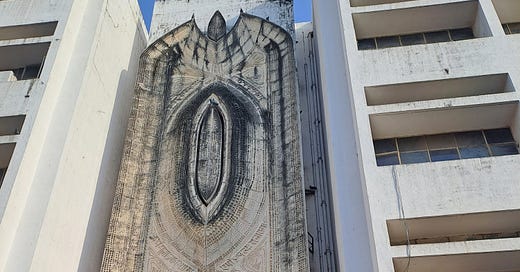



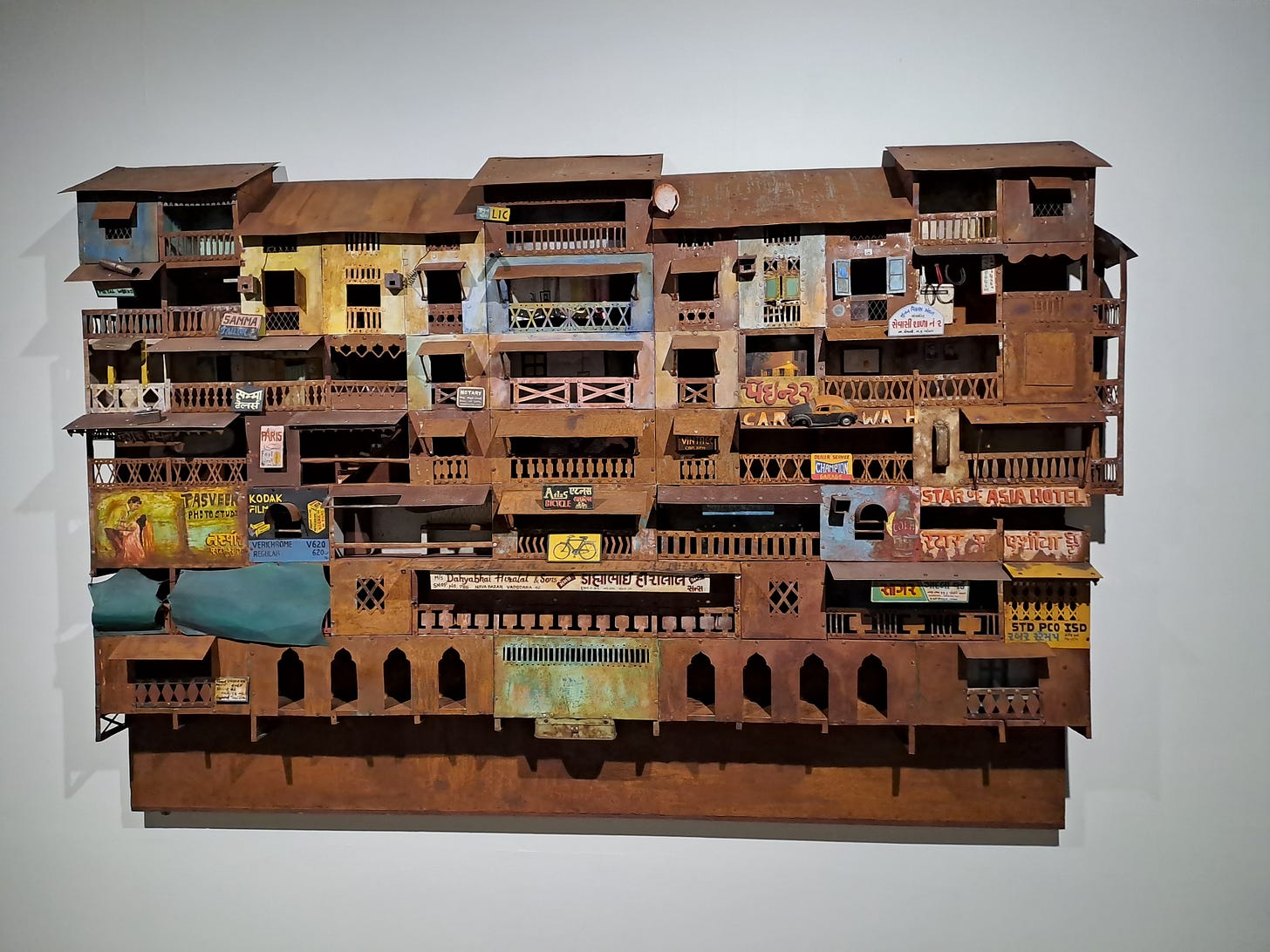
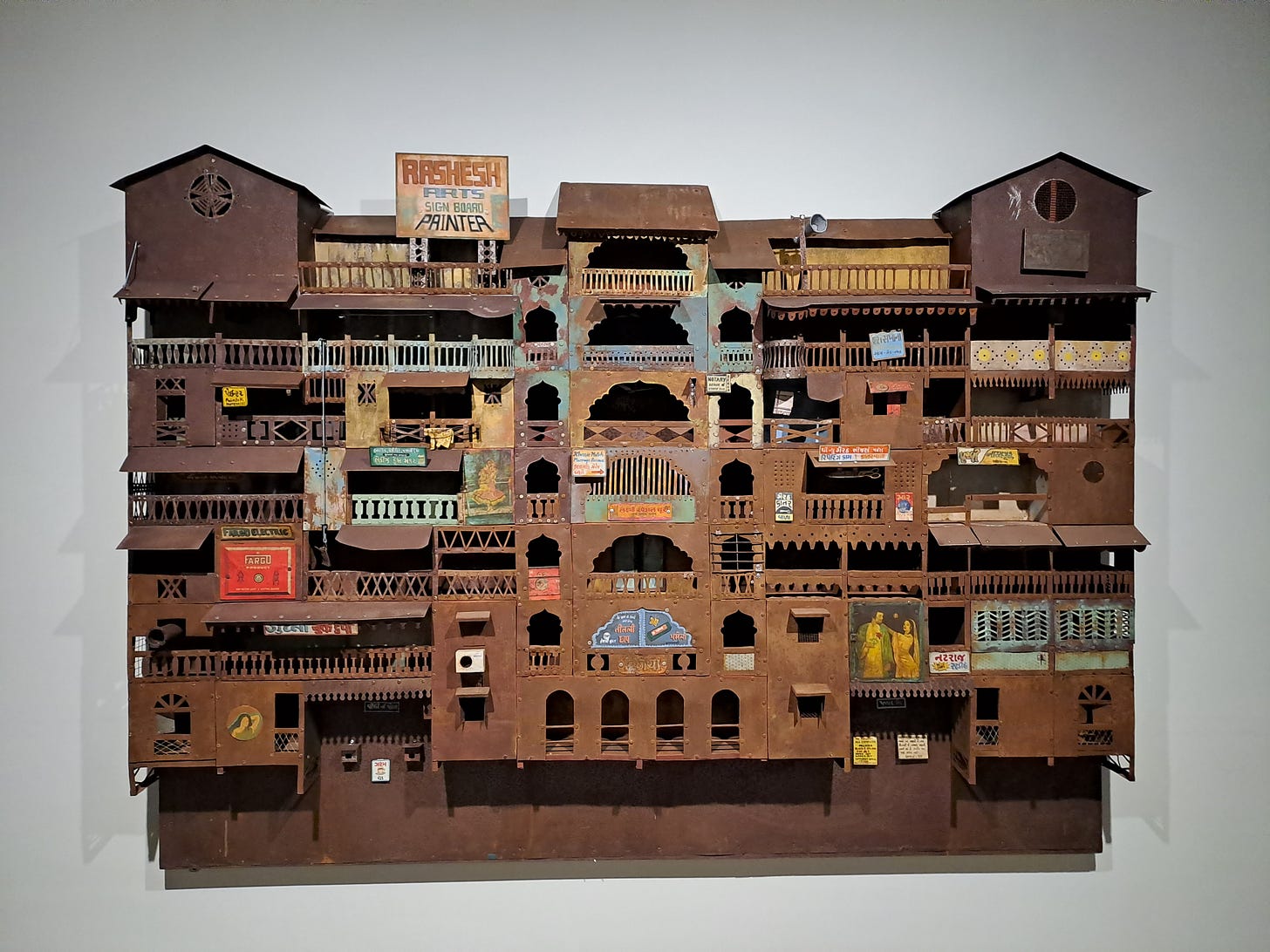

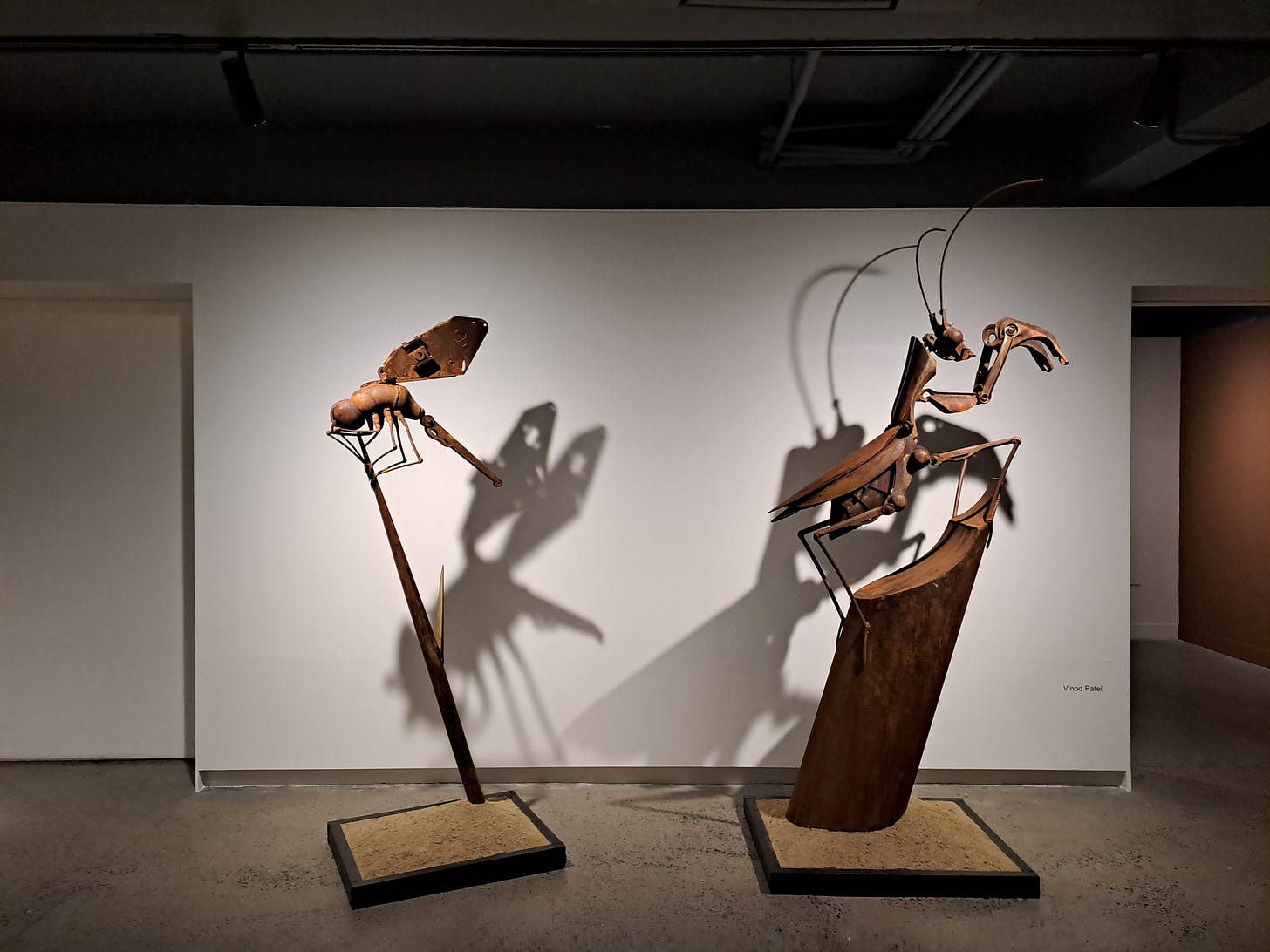
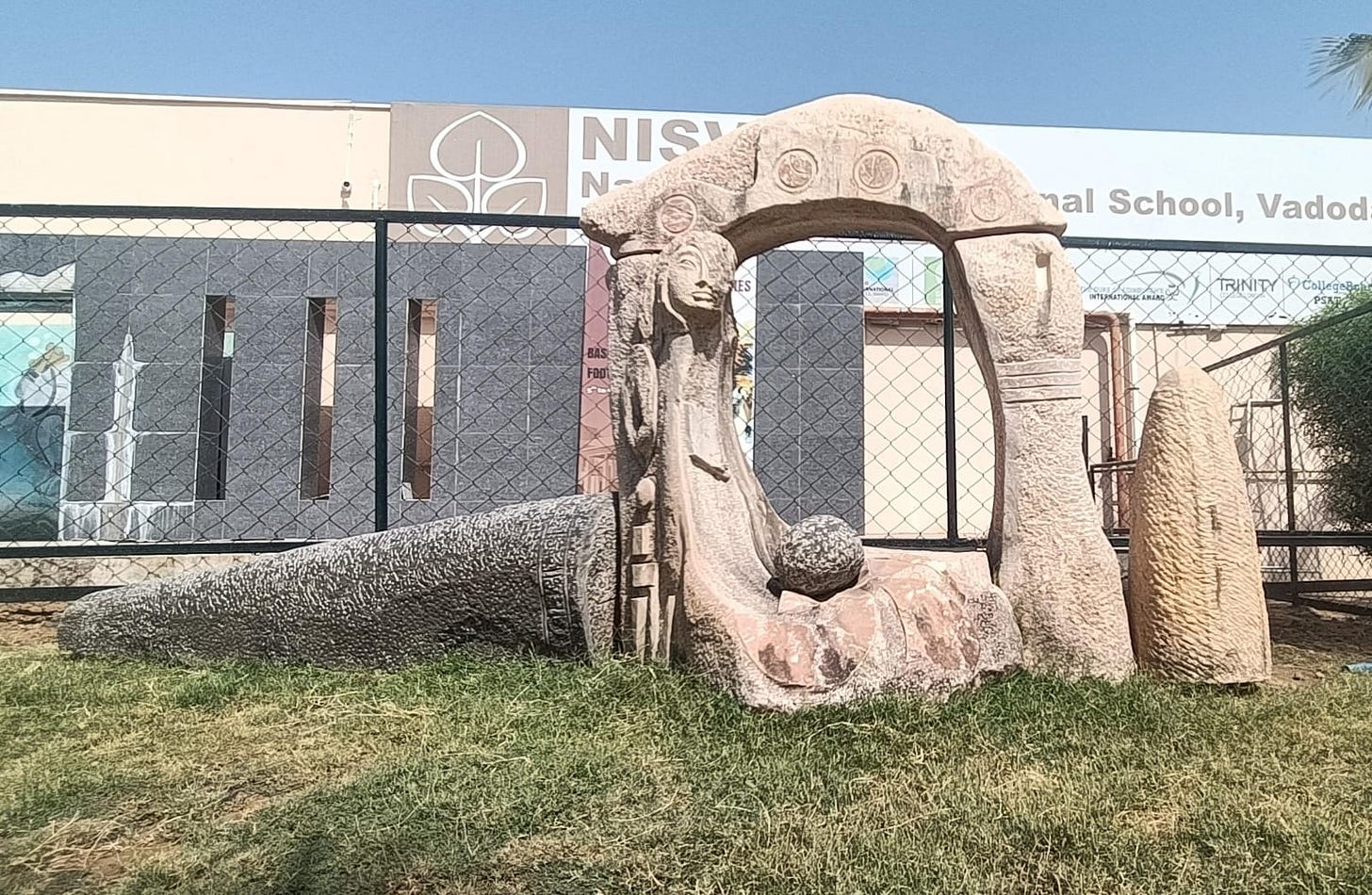
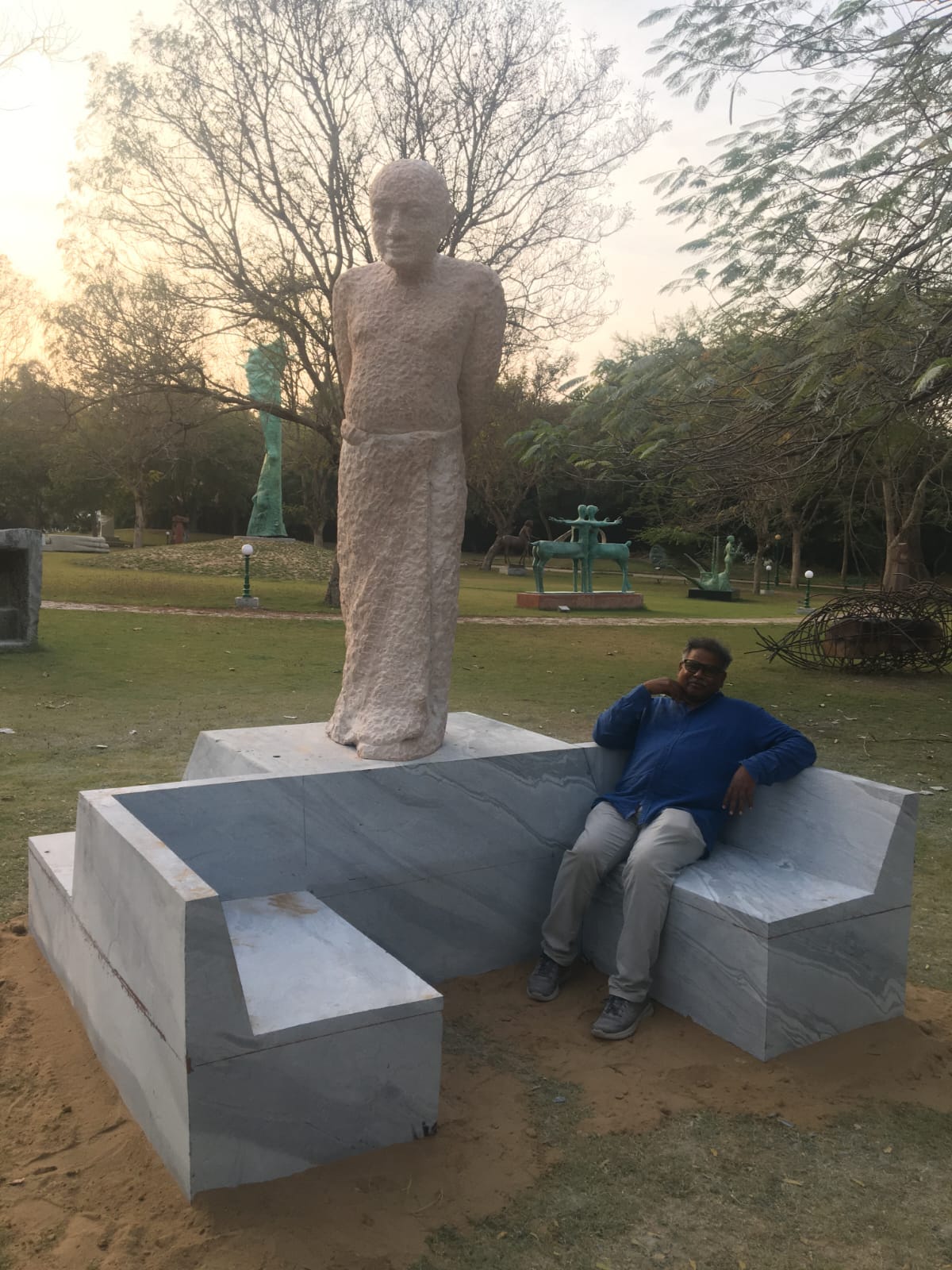
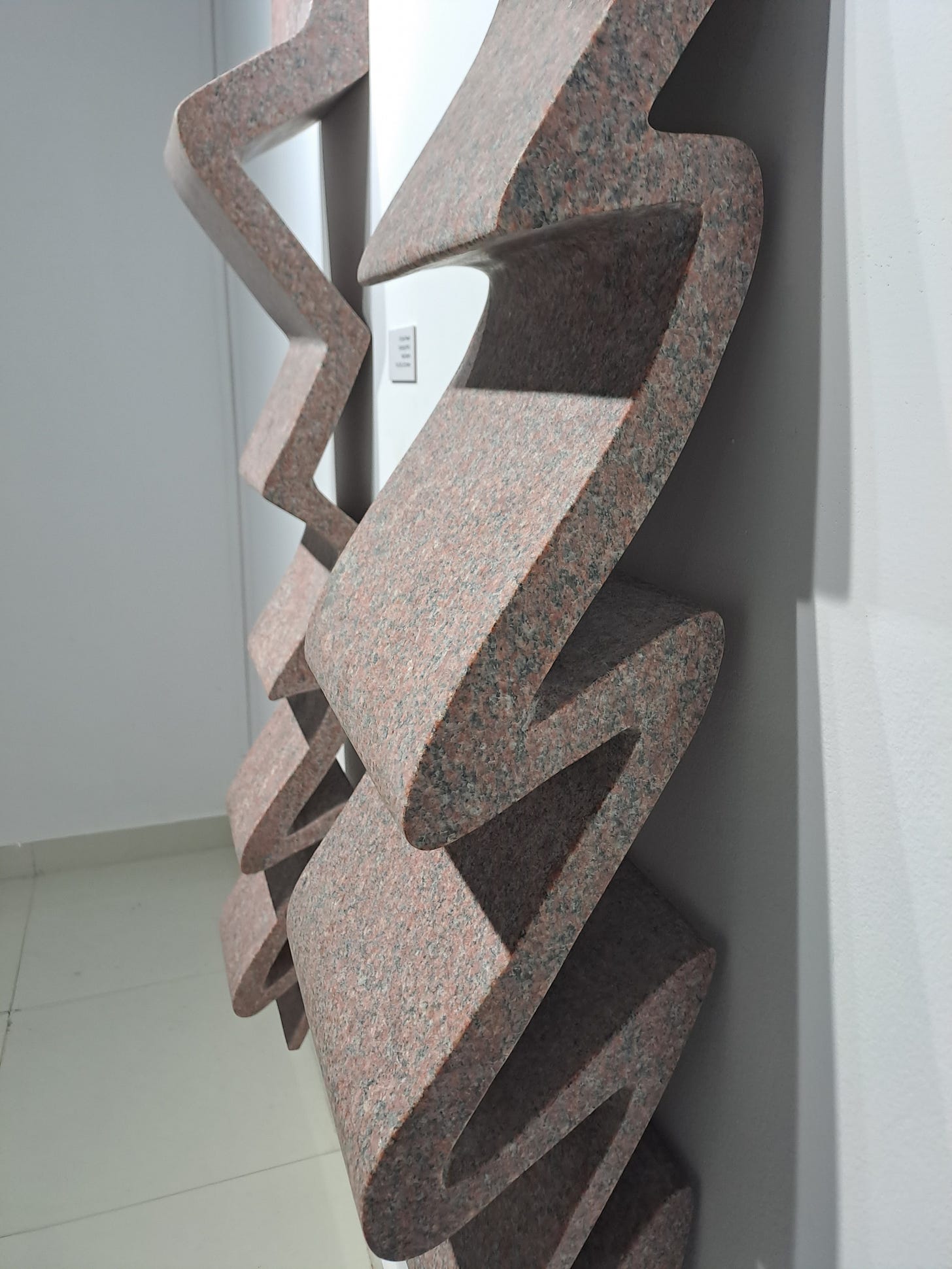
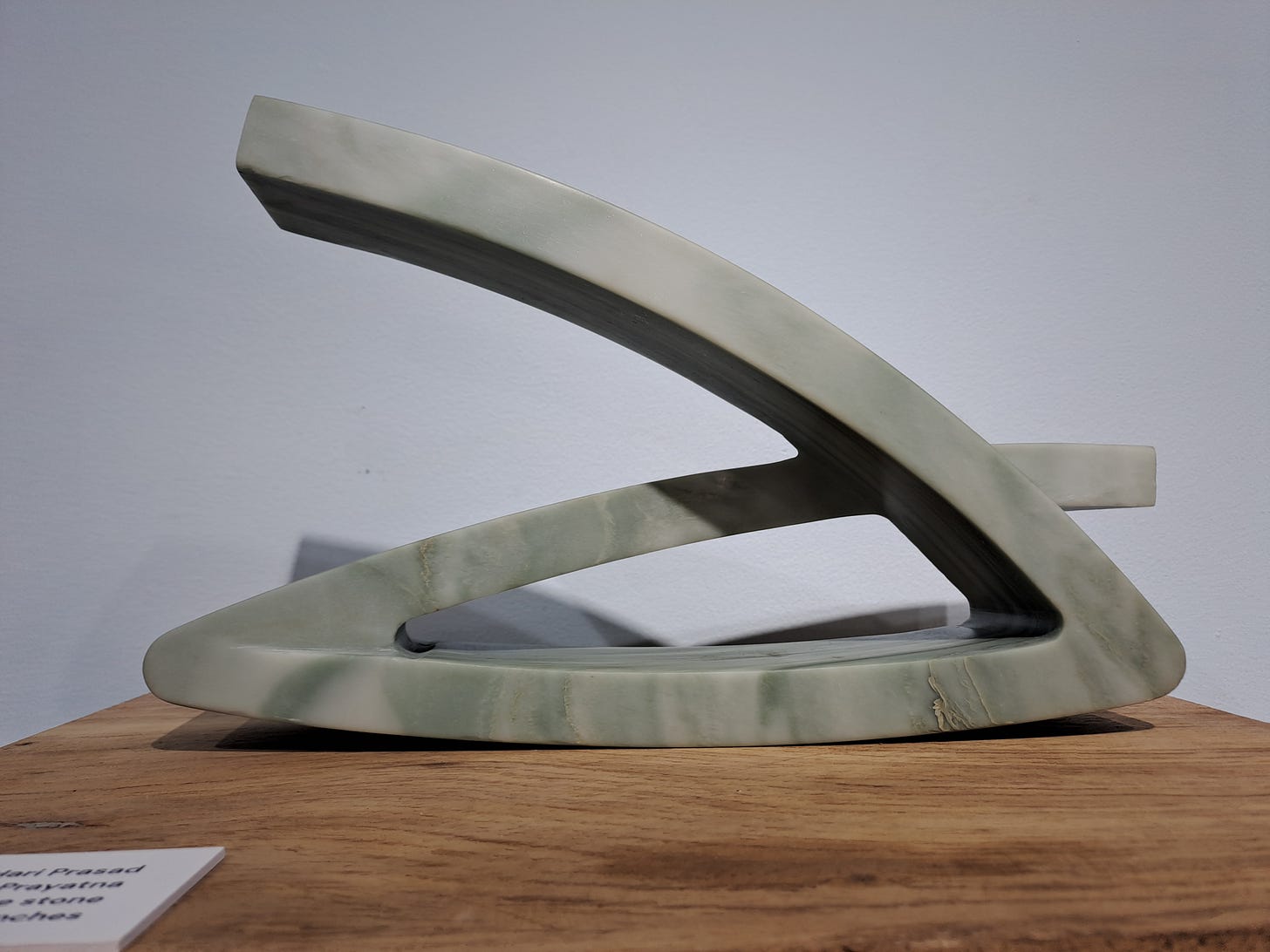
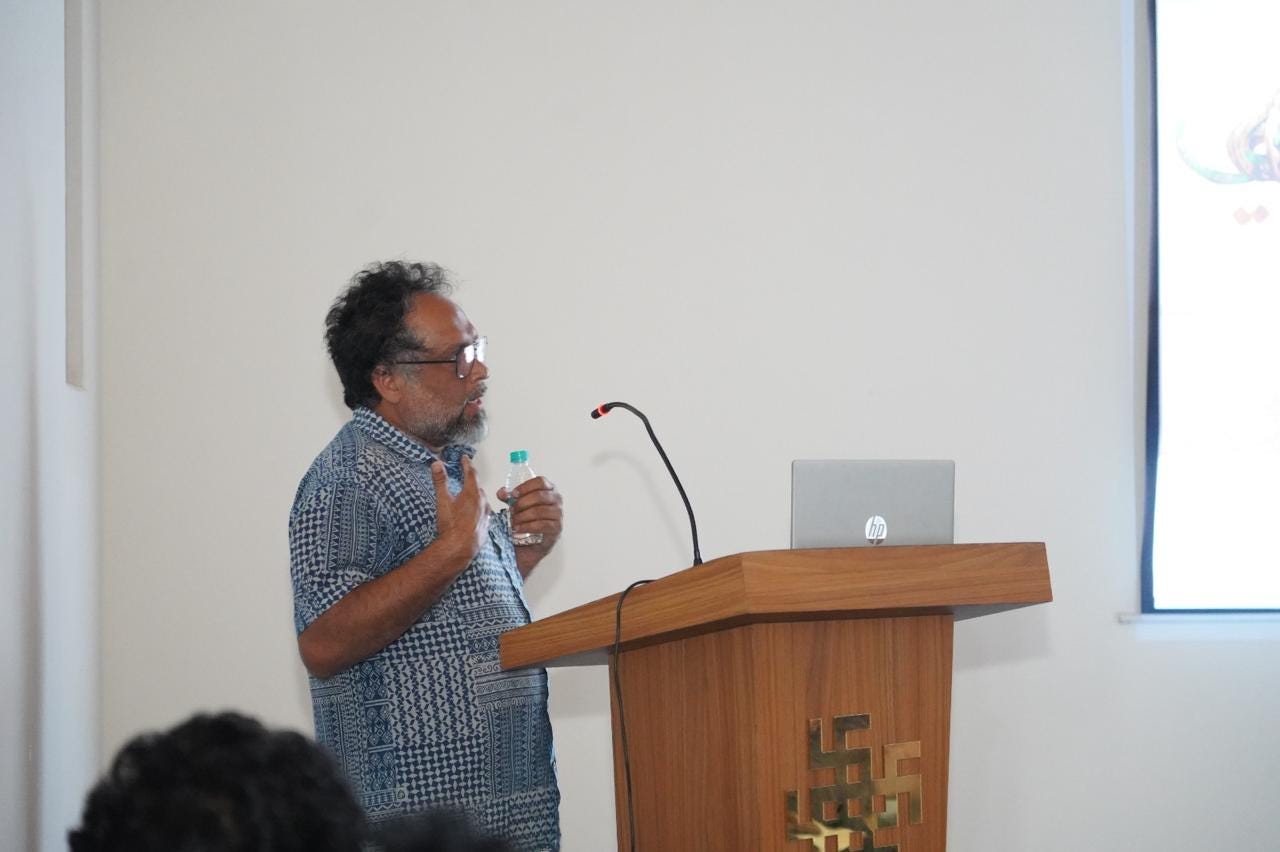
Brilliant piece! Demonstrates, yet again, the unique language of Vadodara. Congrats Sandhya-ji.